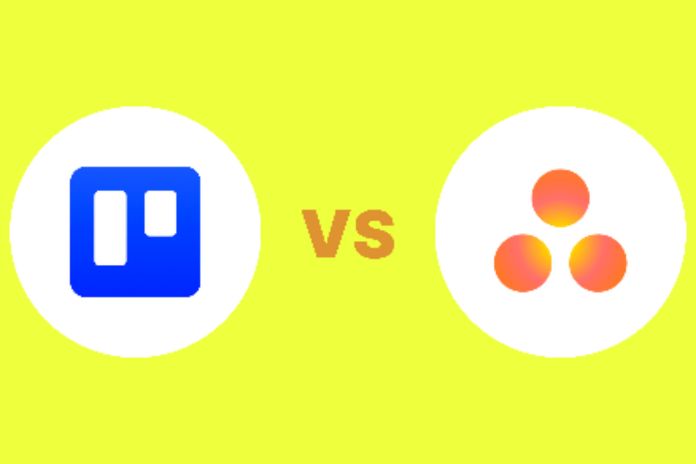Trello vs Asana are two of the best team management tools. Both help to organize tasks between group members, determine deadlines and have control of each step of the work.
It is possible to access the organizers through the computer or the application on the cell phone. With free and paid versions, the services are very popular for creating virtual work environments.
The solutions are ideal for managing projects with collaboration between members. However, the tools have some fundamental differences that make them suitable for some but not so much for others. In the comparison, check out a review of the functions, usability and cost-effectiveness of Trello and Asana and decide which is the best online organizer for your team.
Trello vs Asana
Trello and Asana have to-do list functions with deadlines, a calendar, and adding colleagues to workgroups (boards, in the case of Trello) to share the progress of activities. They also allow you to add files, links, and bookmarks to organize your home. The services also offer a comment area to facilitate interaction between those responsible for each task.
Asana, however, goes further and has a more advanced feature set, especially in the paid plans . Project leaders can control activity priorities, set different goals and permissions for team members, and even get progress reports with charts and performance analysis.
Asana users also have easy access to shared files and a messaging function that can replace email within the company. Integrating the service with email is one of its highlights, as it allows the team to communicate via email or through the official app, without distinction, linked to a task or not.
Trello has features that Asana lacks, such as a voting tool built into the card. However, its list of unique functions lags well behind the competition, especially regarding communication between team members — you need to use integrations with other software.
Ease Of Use
Asana is more complete in terms of functions, but this feature pollutes the interface with too many elements. The tool is easy to use, but it takes more dedication to discover all the features. Trello, however, has a simpler and more natural look. Asana could be perfect for anyone who likes learning new features over time and getting the most out of them for the team. But Rival is certainly easier to use.
Trello’s strength is its visual appeal, compared to a sticky note board, where each card is something to be done by someone, with a related description, checklist, and due date. The program organizes tasks into cards, which can be manually moved between “to do”, “in progress”, and “completed” lists, for example. It is a structure that gives the appearance of real progress to short-term or long-term activities.
Apps Available
Regarding app availability, Trello and Asana are tied because they offer versions for Android and iOS (iPhone and iPad) and online access through the computer’s browser. Both also have extensions for Chrome that allow you to create tasks from open websites. All programs are free to download, with some functions reserved for subscribers.
Integrations With Other Services
Asana has the upper hand when it comes to integration with other services. It allows connecting the user’s account – or the entire team – with more than 50 sites and tools that expand its functions further. Some of them are Google Sheets ( google.com/sheets ), which imports tasks from Asana to create sheets automatically, and Google Calendar ( google.com/calendar ), which puts activities in the Gmail calendar and shows everything on mobile.
Trello also has options that Asana lacks, like Giphy for GIFs; and Join. me and Hangouts for video conferencing. However, with around 30 integrations, it lags well behind the competition when it comes to enhancing functions with the help of third-party services. It is worth remembering that both are integrated with some of the most famous services, such as Slack for communication; Dropbox, Box and Google Drive for storage; Evernote for notes, GitHub for software repository; and Mailchimp for newsletters.
Cost-Benefit
Trello and Asana have free and paid versions, with important features available at no cost and extra benefits for those who subscribe. The premium versions cost nearly US$ 10 (R$ 32 at the current rate) per user per month, paid annually. They also offer customized plans for large companies with requested prices.
Paid Trello increases the number of integrations and the size of attachments, among other perks that aren’t that different from the free version. On the other hand, Asana reserves several features only for those who pay a monthly amount. The biggest impediment of the free mode is the limit of 15 members per team.
Trello comes out on top because it offers a better set of benefits for free users: creating unlimited cards, boards, and teams and adding any number of users to a project.
Conclusion — Trello!
Asana and Trello have what it takes to deliver great experiences if you need an online team and task organization tool. The first is more complete with features and with more control functions. It’s ideal for large groups with leaders who want to track progress and distribute tasks. The board-based option is perfect for teams with collaboration in their DNA, with a less central authority and more fragmentation of activities.
Trello has an advantage because it combines three advantageous qualities for any team: it is easy to use and extremely flexible. It only requires payment to use some of the features it offers, even for large groups with a lot of data. For those looking for a simple yet powerful tool, Trello may be the ideal option.
Also Read: PMO: Know What It Is, What Are The Duties

